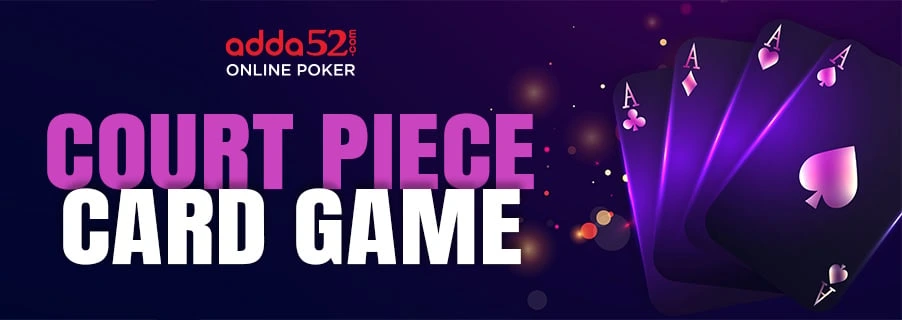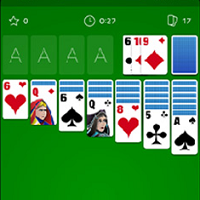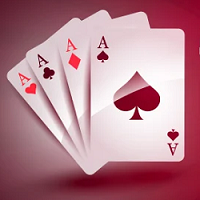
Introduction
Court Piece, a captivating card game, has gained widespread popularity in India and Pakistan. It is known by various names such as Court Pees, Coat Piece, Rung, or Rang. This trick-taking game is cherished for its thrilling and competitive nature, making it a favourite among families and gaming enthusiasts. The primary objective of Court Piece is to score as many tricks as possible within a specified timeframe. Ideally played by four participants in partnership, Court Piece offers an engaging and strategic experience for players looking for an entertaining challenge.
This article will serve as your comprehensive guide, offering insights into the game's mechanics, strategies, and nuances, ensuring that both beginners and experienced players alike can enhance their Court Piece skills.
What is a Court Piece (Rung) Game?
Court Piece, also called Coat Piece card game, is played by four people working together in pairs. In Court Piece, the goal is to score as many tricks as you can within a set time. Tricks are like rounds that you try to win. The players or teams that win the most tricks end up winning the Court Piece card game, whether they are playing online or offline. It's a fun game that involves teamwork and strategy.
The objective of the Court Piece Game
In the Court Piece card game, the main goal is for each team to win tricks by playing the highest card in the suit or using a trump card. The team or players that manage to secure the most tricks during the gameplay end up earning points.
Additionally, players aim to win all 52 tricks in partnership with their teammates for a significant advantage. This often leads to a guaranteed victory for the team that accomplishes this feat. So, the objective is to win tricks and accumulate points while strategically collaborating with your partner to secure a majority of the 52 tricks.
A Guideline to Playing the Court Piece Game
-
Selecting the Dealer:
A dealer is chosen before the game starts. Initially, each player picks a card from the 52-card deck, and the player who receives the lowest-ranking card becomes the dealer. The dealer then distributes 5 cards to all the players.
-
Role of a Trump Caller:
Now, the player sitting to the exact right of the dealer decides on a trump card. The player can choose any suit of their liking as a Trump, but usually, they choose the suit in which they have the maximum number of cards. Once the Trump is finalised, then the remaining cards will be distributed among all the players. Now, the trump caller makes the first move, and the game commences in the counterclockwise direction.
-
Winning the tricks:
Both teams aim to create 7 or more tricks to win the court piece card game. The players must play using the cards of the same suit until they have used all the cards belonging to that suit.
Once all their cards of the same suit are exhausted, they can use a trump card that can win over any card belonging to any suit. For example, if the Trump belongs to an ace suit, then the smallest card of spade, i.e. a 2 of spade, can beat an Ace of any other suit.
The player holding the highest card wins one trick. The player who wins the trick begins the next round and can play any card of their choice.
Set up of Court Piece Game
Setting up a game of Court Piece involves using a standard deck of 52 playing cards. The dealing process occurs in three stages. Initially, each player receives five cards. Following this, the declarer, or trump-caller, is chosen, and they pick the trump suit (referred to as the eldest hand). Lastly, the remaining deck is dealt to ensure each player has a complete hand of cards.
The number of cards dealt for a full hand varies based on the number of players:
- For four, eight, and twelve players, 13 cards are dealt.
- For six players, 16 cards are dealt.
- For ten players, 15 cards are dealt.
The number of decks used depends on the player count:
- One deck is used with 4 players.
- Two decks are used with up to 8 players.
- Three decks are used with up to 12 players.
For games with six players, the 2s are removed from the decks. In the case of ten players, two 2 of the Clubs, two 2 of the Diamonds, one 2 of Hearts, and one 2 of Spades are excluded from the decks.
How To Play The Court Piece Game?
Step 1: Team Formation
- Four players are divided into teams of two at the beginning of the game.
- Teammates sit opposite each other during gameplay.
Step 2: Game Setup
- Dealing and playing proceed in an anticlockwise direction.
- The duration of the game is predetermined before card dealing.
Step 3: Determining the First Dealer
- Each player draws one card from a shuffled deck to determine the first dealer.
- The player with the highest-ranking card becomes the dealer, and the one seated immediately adjacent to the dealer becomes the trump caller.
- Subsequent rounds determine the dealer and trump caller based on wins and losses.
Step 4: Trump Suit Announcement
- Before distributing the remaining cards, the trump caller announces the trump suit for the current round.
- Four cards are dealt out in two rounds after the announcement.
Step 5. Gameplay
- The trump caller initiates the game by playing any card from their hand.
- Other players follow suit, playing cards of the same suit if possible or any other card if they don't have a matching suit, including a trump card.
- If trump cards are played, the highest trump card wins the trick.
Step 6. Winning Tricks
- The winner of each trick leads to the following one.
- The game continues until all cards have been played.
Step 7: Determining the Winner
- The team that wins the maximum tricks accumulates points.
- The group or players with the highest points at the end of the game emerge as the winners.
Play of Trump Caller in Court Piece
Trump Caller's Turn:
The Trump Caller starts the game by playing the first card, initiating the first trick.
Card Rotation:
Moving in a counter-clockwise direction, each player adds one card to the trick.
Playing a Card:
When playing a trick, a player must use a card from the same suit if they have one. If they don't have a card of the same suit, they can play any card from their hand, including a trump suit card, to try and win the trick.
Determining the Winner:
The player who plays the highest trump card or suit card becomes the winner of the trick.
Starting the Next Trick:
The winner of each trick begins the next round by playing a card of their choice.
Collecting Tricks:
As tricks are won, the winning player gathers the cards from the trick and places them face down on their side. This helps everyone keep track of how many tricks each player has won.
Court Piece Card Game Rules
- Use a standard 52-card deck with cards ranked from Ace (highest) to 2 (lowest)
- Four players form two court-piece pairings, sitting across from their partners at the table.
- Establish the maximum number of rounds or the game's duration beforehand.
- As explained above, for the first round, a dealer is chosen by each player picking up one card from the deck, and the player who receives the lowest ranking card is nominated as the dealer.
- The player to the dealer's right cuts the deck and calls the trump to start the game.
- If the Trump-choosing player or their team wins a court, the dealer's teammate becomes the new dealer for the next round.
- If the Trump-choosing player or their team fails to score a court but wins the round, the same dealer deals again.
- If the dealer's team wins, the player who selected the trump becomes the new dealer.
- Reveal the trump after distributing the first 20 cards but before the subsequent 32 cards.
- Each player receives 4 cards at a time from the remaining deck.
- Scoring begins only after all tricks in a round have been played.
- The team with the highest score at the end of the game is the winner.
- Deliberate poor play by a player results in the other team scoring a court.
Rung Court Piece Strategy
Here are some key strategies to enhance your gameplay:
- Since Rung Court Piece is played in fixed partnerships, understanding your teammate's style of play is crucial. Effective communication and coordination with your partner can significantly influence the outcome of each round.
- The player sitting after the dealer, known as the "eldest hand" or "elder hand," has the privilege of calling the trump after all cards are dealt.
- Carefully assess your hand and consider the strength of your cards before making this crucial decision.
- Recognize that the dealer's team has the disadvantage of not calling Trump. This adds an extra layer of strategy, as the dealer's team must adapt their play based on the trump suit chosen by the eldest hand.
- Given that players in fixed partnerships sit across from each other, pay attention to your opponent's moves and the cards they play.
- Awareness of the cards played by your partner and the opponents can help you make informed decisions during the game.
- Rung Court Piece involves dynamic and ever-changing gameplay. Be adaptable and flexible in your strategy, especially considering the variations in single and double tricks, to stay one step ahead of your opponents.
- If you are the trump caller, leverage this advantage by carefully observing the cards played and predicting the potential outcomes of each trick. This foresight can aid in maximising your team's points.
Terms
Understanding these terms is essential for players engaging in Court Piece, as they lay the foundation for various aspects of the game, including determining trumps, initiating the deal, and strategically influencing the game's direction.
Trumps:
- The highest-ranking suit in the game is typically decided by the player or team that wins a particular round.
- There are alternative rules to determine trumps, offering variety in gameplay.
Cut the Deck:
- The act of randomly selecting a portion of cards from a shuffled deck and placing them at the bottom of the pile.
- This process is conducted before dealing, ensuring randomness in the distribution of cards to players.
Trump Caller:
- The person positioned immediately to the right of the dealer in Court Piece is known as the 'Trump Caller'.
- The Trump Caller holds the crucial responsibility of declaring the trump suit for the ongoing round, influencing the gameplay strategy.
Scoring System
- Winning a Deal: The Coat Piece team that secures victory in seven or more tricks during a hand is considered to have won the deal.
- Earning Courts: According to Court Piece rules, if a team manages to win seven consecutive deals, they receive one Court.
- Resetting Count on Scoring a Court: Whenever either team scores a court, the count resets to zero for both the court and the number of consecutive deals won.
- Goon Court: If a Court Piece team wins the first seven consecutive tricks of a hand, they win the deal and earn one Court immediately. This is often referred to as a goon court.
- Bavney (52-Court): If a team achieves the remarkable feat of winning every trick in a hand, they secure a massive 52 Courts, known as a Bavney.
Tips and Tricks
- Use cards with a value of 8 or below in the initial rounds to secure tricks.
- Strategically lose the first two or three tricks to make your opponents play their high-value cards early in the game.
- Complete 7 consecutive tricks to score a court.
- Optionally, continue playing to attempt 13 consecutive tricks, winning 52 courts and practically ensuring victory for your team.
- Unless your opponents are already winning consistently, hold off deploying your high-value cards and trump suit until the game's later stages.
- When playing Court Piece games online, consider the timing of deploying high-value cards and trump suits, saving them for crucial moments.
- The 52 courts, achieved by winning all tricks in a hand, practically guarantee victory and contribute to scoring extra points in the game.
Coat Piece Game Variations
Point System Variation
Players decide how many points will be awarded at the end of the game. Adds flexibility to the scoring system, allowing players to customise the game's intensity.
Variations in Rounds
Players determine the number of rounds (hands or deals) in a game. Offers variability in the duration and structure of the game, catering to player preferences.
Variations in Timer
Each player is allocated a specific time limit for their turn.
Example: Fast Rung games (7 secs), Standard Coat Piece games (15 secs), Slow (30 secs), and Very Slow Rung games (60 secs). Players can turn off the timer for private tables.
Redeal Variation
Cards can be redealt if players have Jacks or lower cards. Impact: Introduces a strategic element, allowing players a chance to improve their hand under specific conditions.
Bigger Piles
Larger piles are required to win tricks. Players need five tricks to start the game, and after that, they only need three tricks to win the pile (instead of two). It alters the dynamic of the game, influencing the number of tricks required for victory.
No Trump
Allows players to declare 'No trumps.'
Adds a layer of complexity by removing the trump suit, encouraging different strategic considerations during gameplay.
Be Rung Game Trump
The first rung card played of a different suit becomes the trump. No trump caller; the dealer deals all 13 cards. Without Trump, trick-taking continues until a player is unable to follow. The declarer must display the non-suit cards discarded. The declarer's selected suit is placed face down, adding an element of mystery to Trump’s selection.
Poker vs Court Piece
|
Poker |
Court Piece |
|---|---|
|
Strategy card game |
Trick-taking card game |
|
Typically 2 to 10 players |
4 players in fixed partnerships (teams of 2) |
|
The objective is to win using High hand, combinations, bluffing |
The objective of Court Piece is to win tricks, accumulate points |
|
Variants are Texas Hold'em, Omaha, Seven Card Stud, etc. |
Single Sir, Double Sir, variations in rounds |
Frequently Asked Questions
How many cards are in a court piece?
A Court Piece deck typically consists of 52 cards. The game involves a standard deck with four suits: Hearts, Diamonds, Clubs, and Spades, each containing cards from Ace to King.
How do you play the card game court piece?
In Court Piece, a trick-taking game, four players in partnerships aim to win tricks. The trump suit is declared, and players strive to accumulate points by winning tricks. The team with the highest score wins the game.
How do you win a Court Piece?
To win Court Piece, accumulate points by winning tricks during rounds. The team with the highest number of successful tricks wins the game. Achieving a predetermined number of consecutive wins, known as a "court," contributes to victory.
What is the ace rule in court piece?
The highest-ranking card is ace in the game. Any player playing the ace of any suit wins the trick unless it comes across a trump card.
Conclusion
This article covers how to ace court pieces and play this exciting and engaging game with your family and friends. In this article, we prepare you for this game by providing detailed insights about the objective, gameplay, strategies, and the different variations of the court-piece game.

 Spider Solitaire
Spider Solitaire
 Teen Patti Rules
Teen Patti Rules
 Uno
Uno